For traders seeking to optimize their trading performance, understanding the intricacies of the ROC Indicator is paramount.
The application of this technical tool can significantly augment one's ability to navigate the complexities of the financial markets with precision and confidence.
By delving into the seven best strategies tailored to enhance trading with the ROC Indicator, traders can unlock a wealth of potential opportunities that may elevate their trading endeavors to new heights.
ROC Indicator Basics
In the realm of technical analysis, understanding the fundamental principles of the Rate of Change (ROC) indicator is paramount for traders seeking to gauge momentum and potential market trends effectively. The ROC, also known as Rate of Change, serves as a crucial tool in analyzing price movements by comparing the current price to a price from a previous period. By calculating the percentage change in price over a specified number of periods, traders can assess the momentum behind price movements.
One key feature of the ROC indicator is its ability to identify overbought and oversold conditions in the market. Positive ROC values typically signal a bullish trend, indicating upward momentum, while negative values suggest a bearish sentiment with downward momentum. Traders often look for zero line crossovers on the ROC indicator, as these can signify potential trend changes in the market.
Additionally, ROC helps traders spot divergence from price action, which can hint at upcoming market reversals or turning points. As one of the essential technical analysis tools, mastering the ROC indicator can significantly enhance a trader's ability to interpret market dynamics and make informed trading decisions.
ROC Calculation Method
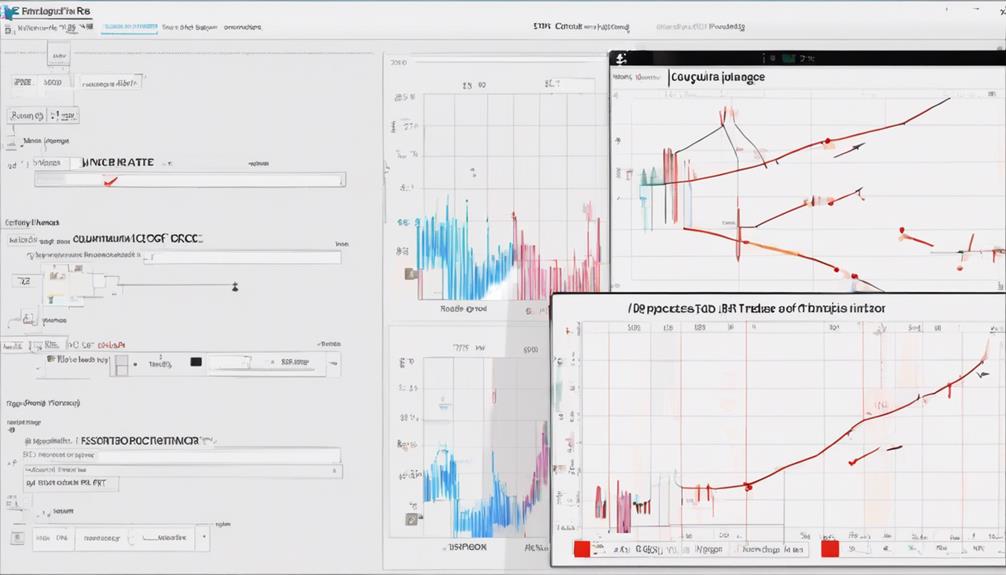
Utilizing a precise mathematical formula, the Rate of Change (ROC) indicator calculates the percentage difference between the current closing price and the closing price N periods ago to provide traders with valuable insights into price momentum.
The calculation involves subtracting the closing price N periods ago from the current closing price, dividing this result by the closing price N periods ago, and then multiplying the outcome by 100. This method quantifies the percentage change in price over a specific historical period, aiding traders in analyzing price momentum.
Commonly used N values in ROC calculations include 14, 9, 25, or 200, enabling traders to assess various timeframes and trends effectively.
Understanding the ROC calculation method is vital for determining the rate of price change, identifying market trends, and recognizing momentum shifts. This knowledge is crucial for traders looking to incorporate the ROC indicator into their trading strategies and decision-making processes efficiently.
Interpreting ROC Signals
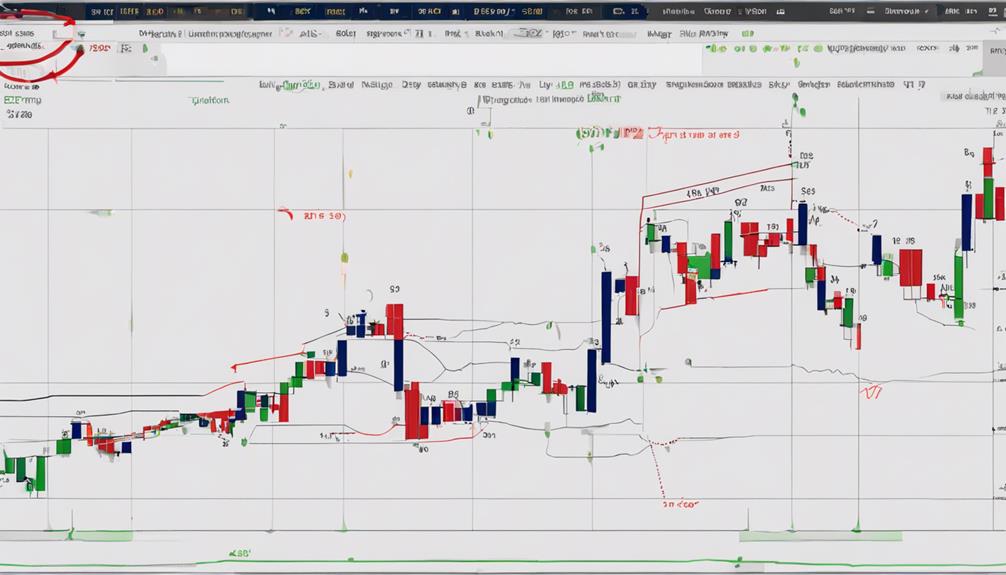
The interpretation of ROC signals plays a pivotal role in guiding traders' decisions by offering valuable insights into price momentum and potential market trends. Rate of Change (ROC) serves as a momentum indicator, signaling positive momentum when above zero and negative momentum when below zero. Crossing above zero indicates bullish momentum, suggesting a strengthening market sentiment, while crossing below zero signifies bearish momentum, indicating a weakening sentiment.
ROC crossing its zero line can signal potential trend reversals in the market. Extreme levels of ROC can indicate overbought or oversold conditions, providing traders with clues about possible price corrections. Additionally, observing ROC divergence, where there is a disparity between price action and ROC movement, can be a strong indicator of imminent market turning points.
Traders utilize these ROC signals to make informed decisions about entry and exit points in the market, enhancing their trading strategies and overall performance.
Leveraging ROC for Momentum Trading
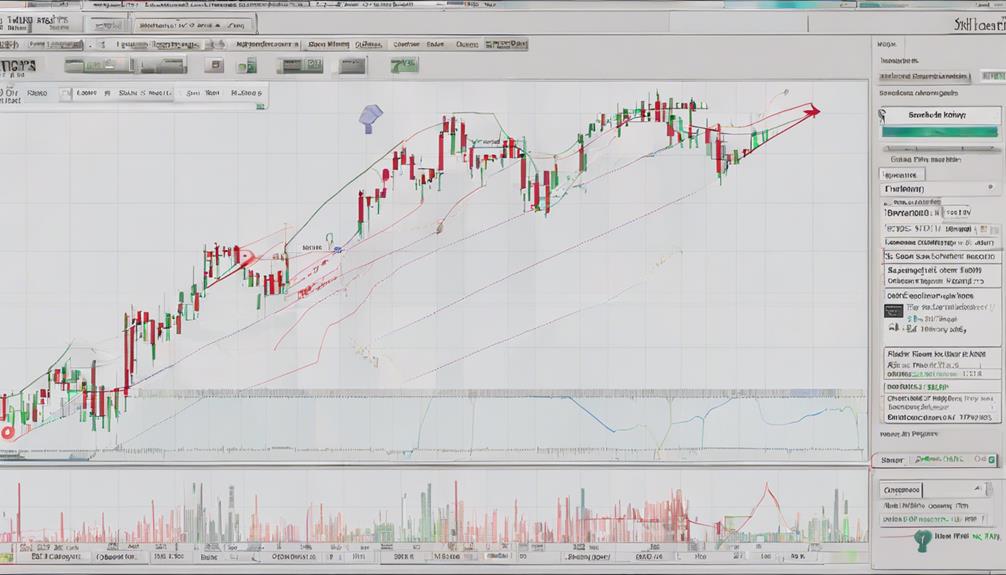
Momentum trading with ROC hinges on timing trades effectively by capitalizing on rapid price changes. By leveraging ROC for momentum trading, traders can pinpoint stocks exhibiting strong positive or negative momentum, enabling them to identify potential entry points.
Setting specific parameters using ROC allows traders to filter out noise and focus on significant price movements, aiding in the execution of disciplined and well-defined trading strategies.
Timing Trades Effectively
Effectively timing trades in momentum trading can be significantly enhanced by leveraging the Rate of Change (ROC) indicator to capitalize on price movements. When utilizing ROC for timing trades:
- Identify Bullish or Bearish Momentum Shifts: ROC helps in recognizing shifts in momentum, enabling traders to enter or exit positions effectively based on the direction of the trend.
- Confirm Trend Direction: By incorporating ROC, traders can confirm the prevailing trend direction and assess the strength of momentum, aiding in making informed trading decisions.
- Optimize Trade Entries and Exits: The oscillations of ROC around the zero line provide insights into momentum shifts, allowing traders to optimize their trade entries and exits for better profitability.
Identifying Price Momentum
Utilizing the Rate of Change (ROC) indicator in momentum trading provides traders with a valuable tool for identifying and capitalizing on price momentum shifts. The ROC indicator helps traders gauge the speed of price changes within a security, with positive ROC values signaling increasing prices and negative ROC values indicating decreasing prices.
By leveraging ROC for momentum trading, traders can pinpoint potential entry/exit points based on ROC movements, confirm trend strength, and capitalize on momentum-driven price shifts. Understanding price momentum through ROC empowers traders to enhance their trading strategies and make more informed decisions in dynamic markets.
This analytical approach enables traders to effectively navigate market fluctuations and seize opportunities presented by evolving price dynamics.
Setting Entry Points
When considering momentum trading strategies, leveraging the Rate of Change (ROC) indicator to identify optimal entry points is crucial for capitalizing on price shifts.
Key Points:
- Positive Momentum Shifts: ROC helps in spotting positive momentum shifts, signaling potential buy opportunities.
- Optimal Entry Points: Traders can use ROC to determine the best entry points during price uptrends with accelerating momentum.
- Utilizing ROC for Trading Strategies: Incorporating ROC values in trading strategies enhances decision-making by highlighting favorable buying moments.
Advanced ROC Trading Techniques
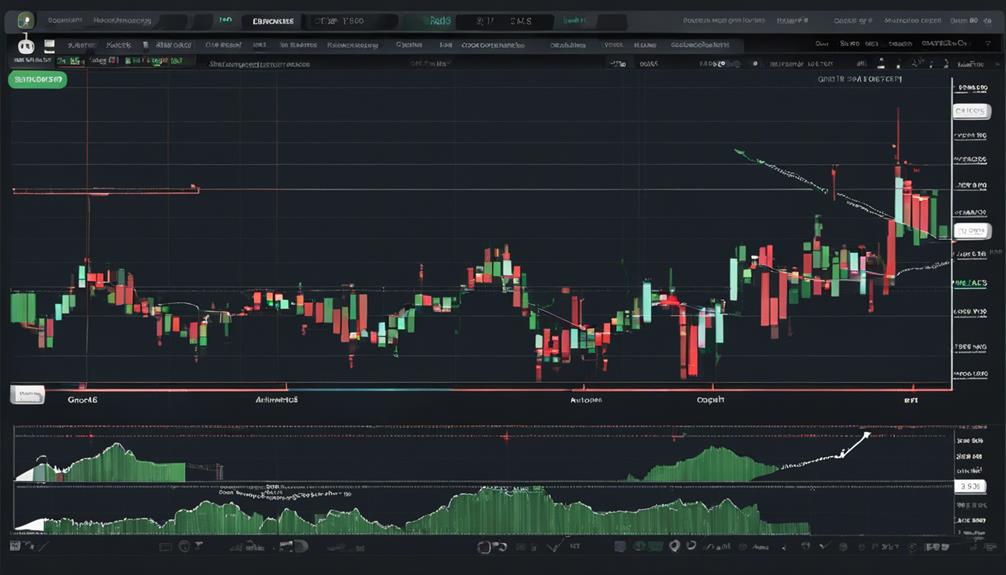
Implementing ROC divergence strategies and momentum reversal techniques can provide traders with valuable insights into potential market turning points and enhance the timing of their trades.
By combining the ROC indicator with other momentum indicators like Stochastics, traders can identify trend reversals more effectively and maximize their trading opportunities.
These advanced ROC trading techniques offer traders a more sophisticated approach to capturing market trends and making well-informed trading decisions.
ROC Divergence Strategies
Exploring advanced strategies for utilizing the ROC indicator, particularly focusing on ROC Divergence techniques, offers traders valuable insights into potential trend reversals and informed trading decisions. When considering ROC Divergence strategies, traders should keep in mind the following key points:
- Identification of Divergence Patterns: Recognizing Bullish Divergence (higher lows in ROC, lower lows in price) and Bearish Divergence (lower highs in ROC, higher highs in price) is crucial for anticipating potential market shifts.
- Confirmation with Technical Indicators: Validating ROC Divergence signals with other technical indicators enhances the reliability of divergence patterns, leading to more informed trading decisions.
- Achieving Higher Accuracy: Utilizing ROC Divergence strategies with precision and thorough analysis increases the accuracy of predicting trend reversals and capturing profitable trading opportunities.
Momentum Reversal Techniques
Building on the foundation of ROC Divergence strategies, delving into Momentum Reversal Techniques offers traders an advanced approach to identifying and capitalizing on potential trend shifts using the ROC indicator.
Advanced traders utilize momentum reversal techniques with ROC to anticipate momentum changes and capitalize on early signals, whether in bullish or bearish market conditions. Techniques such as divergence analysis and zero line crosses play a crucial role in enhancing trading decisions by providing early warnings of potential reversals.
Additionally, incorporating multiple timeframes and confirming signals with other indicators can further validate the accuracy of ROC-based trading strategies, enabling traders to make more informed decisions and potentially increase their profitability.
ROC Indicator in Conjunction With Other Tools
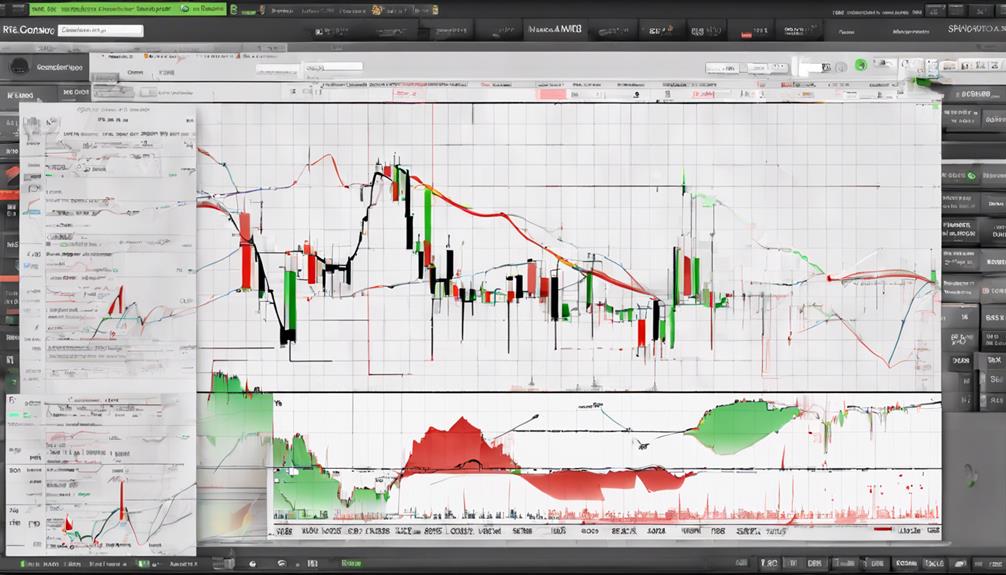
When utilized in conjunction with other technical analysis tools, the ROC indicator can provide valuable insights into market dynamics and enhance trading decisions. Here are three ways to effectively combine the ROC indicator with other tools:
- Moving Averages: Integrating ROC with moving averages can help confirm trend direction and filter out false signals. By analyzing the relationship between ROC and moving averages, traders can make more informed decisions about potential entry and exit points.
- Stochastics: Using ROC in combination with Stochastics can assist in identifying potential trend reversals and increasing trading accuracy. By aligning signals from both indicators, traders can gain a clearer picture of market momentum and possible shifts in price direction.
- Bollinger Bands: When paired with Bollinger Bands, ROC can provide confluence signals for both overbought and oversold conditions. This combination offers traders a comprehensive view of market volatility and helps in pinpointing optimal trading opportunities.
Maximizing Profits With ROC
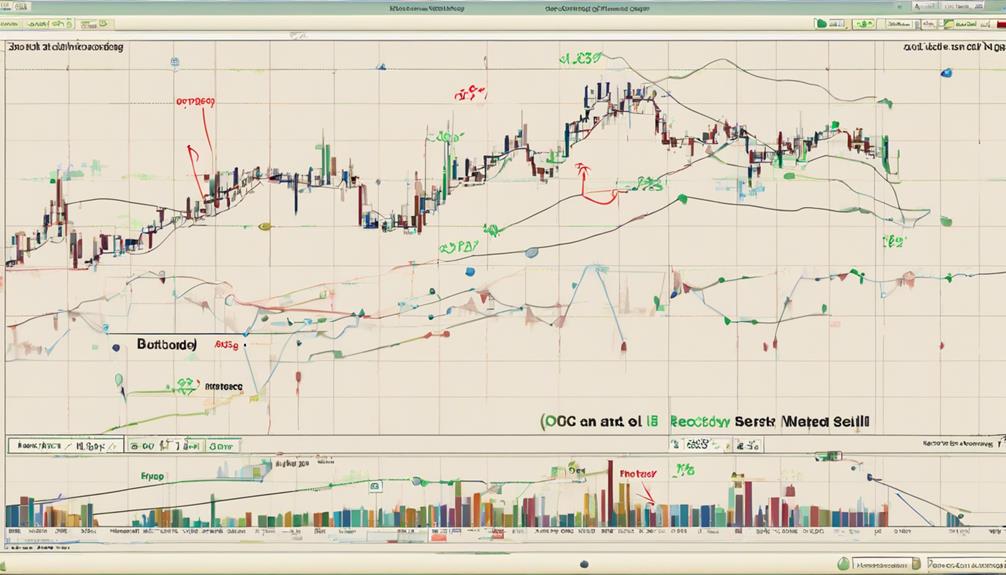
To capitalize on the potential for maximizing profits with the ROC indicator, traders can strategically leverage its early identification of trend reversals in conjunction with other indicators to enhance trading outcomes. By recognizing changes in the Rate of Change (ROC) early on, traders can adjust their strategies to align with evolving market conditions, potentially increasing profitability.
Incorporating ROC into a comprehensive trading strategy that considers trends, momentum, and price reversals can provide valuable insights for making informed trading decisions. Backtesting various ROC strategies allows traders to fine-tune their approaches and identify the most effective methods for maximizing profits.
Moreover, integrating ROC into a diversified trading plan can help mitigate risks and optimize overall performance. Understanding the nuances of ROC readings and how they interact with other indicators is crucial for traders looking to capitalize on opportunities in the stock market and enhance their profit potential.
What Are the Advantages of Using ROC Indicator Strategies for Commodity Trading?
Using the best ROC indicator strategies for commodity trading can offer several advantages. These strategies provide insight into potential trends and market momentum, helping traders make informed decisions. By identifying favorable entry and exit points, traders can maximize profits and minimize risks when utilizing these powerful indicator strategies.
Frequently Asked Questions
How Do You Trade With ROC Indicator?
Trading with the ROC indicator involves identifying overbought or oversold conditions, using crossovers with the zero line for trend changes, leveraging divergence from price action for timing, and confirming breakouts. Combining ROC with other tools improves decision-making.
How Accurate Is ROC Indicator?
The ROC indicator has shown a high level of accuracy in trading scenarios, with various studies indicating success rates of up to 93%. This analytical tool provides valuable insights for traders seeking to make informed decisions in the financial markets.
Which Trading Strategy Is Most Successful?
The most successful trading strategy is the one that aligns with an individual's risk tolerance, time horizon, and market conditions. Backtesting various approaches with the ROC indicator and optimizing for specific parameters can help identify the optimal strategy.
Is ROC a Leading or Lagging Indicator?
ROC is unequivocally a leading indicator, offering traders a forward-looking perspective by measuring price momentum relative to a previous period. This analytical tool aids in anticipating market shifts, empowering traders to make proactive and informed trading decisions.
Conclusion
In conclusion, the Rate of Change (ROC) Indicator serves as a valuable tool for traders seeking to enhance their trading strategies. By understanding its calculation, interpretation, and application in conjunction with other technical analysis tools, traders can effectively identify trends, momentum shifts, and potential entry/exit points.
Utilizing ROC in trading scenarios can lead to improved decision-making and increased profitability. Like a skilled navigator using a compass to chart a course, traders can rely on ROC to guide them through the complexities of the market.
